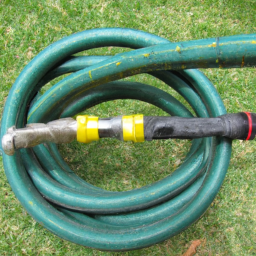How To Cut A Garden Hose A Guide
Table of Contents []
How To Cut A Garden Hose
Introduction
With the warmer months on the horizon, gardening will soon be at the top of your agenda. From mowing the lawn to planting blooms, there's plenty to do in preparation for summer. But before you can get started, it's important to make sure you have all the necessary tools and equipment, including garden hoses. Cutting a garden hose in order to better fit your needs is something that requires a few basic steps. In this article, you'll learn all about how to cut a garden hose and its associated topics.
What Is A Garden Hose?
A garden hose is a flexible tube used to transfer water from a faucet to your garden or other areas where water is needed. Garden hoses can be made from plastic, rubber, or vinyl and are available in a variety of lengths ranging from 25 to 100 feet. There are many different styles and sizes of garden hoses that are ideal for different situations.
Comparing Garden Hoses
When comparing different garden hoses, it's important to consider the length, diameter, and material used to make the hose. The material is important as it can determine the durability of the hose, as well as the flexibility and kink-resistance of the hose. The length and diameter will determine the amount of water that can be transferred when using the hose.
Selecting A Garden Hose
When buying a garden hose, it's important to consider its intended purpose. If you're using the hose to reach more remote parts of your garden, a longer hose may be the best option. However, if you simply need to attach the hose to a faucet and reach the nearest flower beds, a shorter hose may be sufficient. The material of the hose is also important, as some materials may kink or break more easily than others.
Using A Garden Hose
Before using a garden hose, it's important to make sure that all the connections are secure and that there are no leaks. In order to maximize the length of the hose, it's best to use a threaded adapter to join two hoses together. It's also important to use a high-quality faucet-to-hose connector to ensure a tight seal and minimize leaks.
Cleaning A Garden Hose
Regularly cleaning a garden hose can help it last longer and work more efficiently. Cleaning a garden hose consists of removing any debris or dirt that is stuck on the outside of the hose, as well as flushing out any debris that may be inside the hose. Additionally, it's important to check the fittings to ensure that they are not corroded or cracked.
How To Cut A Garden Hose
Once you've purchased your garden hose, you may need to cut it in order to better fit your needs. In order to correctly cut a garden hose, it's important to use a sharp utility knife or razor blade and a cutting board. You should also make sure that the edges of the hose are smoothed down with sandpaper.
Patching A Garden Hose
If your garden hose has a leak, you may need to patch it in order to continue using it. Patching a garden hose requires the use of patch tape, which can be found at any hardware store. When patching a garden hose, it's important to ensure that the patch is securely applied and free of any air bubbles.
Garden Hose Storage
Once you're finished using the garden hose, it's important to store it properly to ensure that it stays in good condition. A garden hose can easily kink and crack if it's stored improperly, so it's important to find a safe, dry space for it. Additionally, the garden hose should be coiled neatly and hung on a wall or stored in a box to minimize the risk of damage.
Summary
Cutting a garden hose in order to better fit your needs is a fairly straightforward process that requires a few basic steps. Selecting a garden hose, using a garden hose, cleaning a garden hose, and patching a garden hose are all important steps that should be taken before, during, and after the cutting process. Additionally, proper garden hose storage is essential in order to make sure the garden hose lasts as long as possible. With the proper knowledge and tools, you'll be prepared to cut garden hoses with confidence.

Previous Page
Next Page
